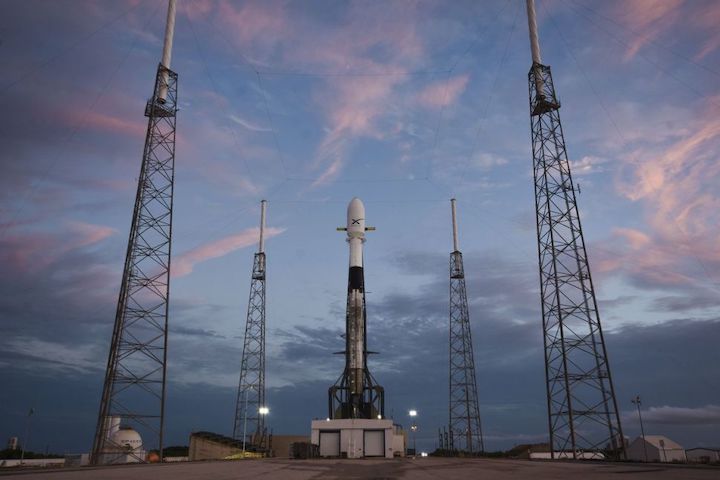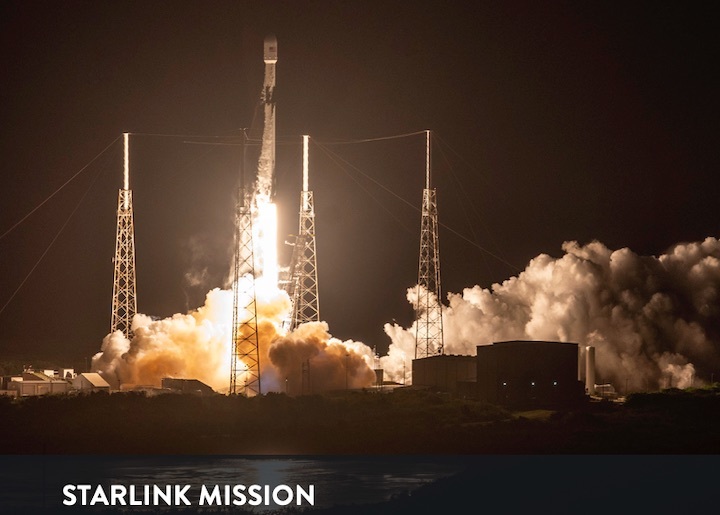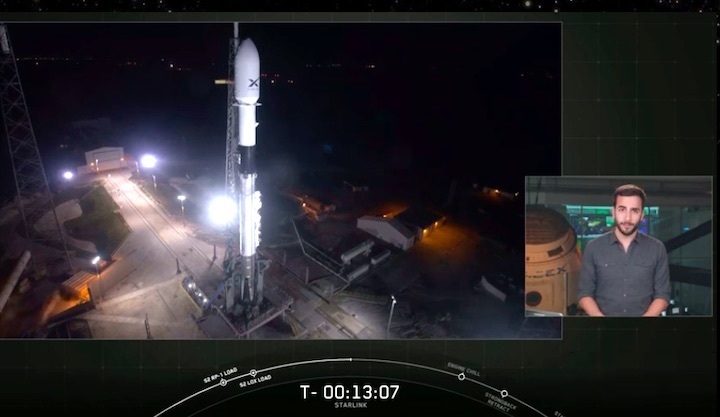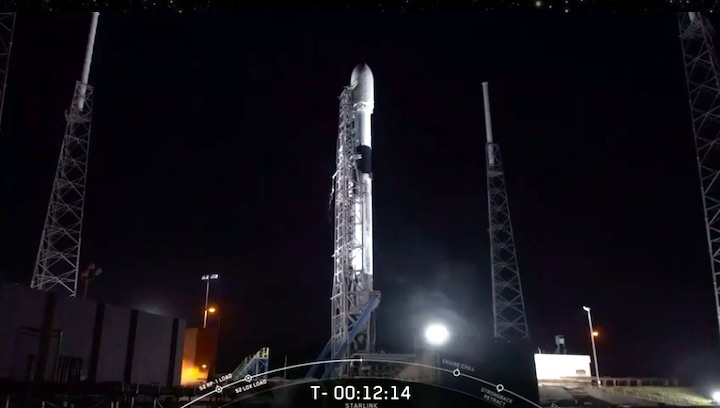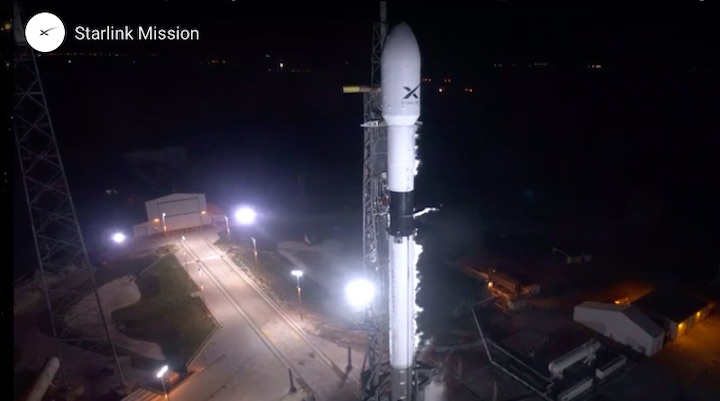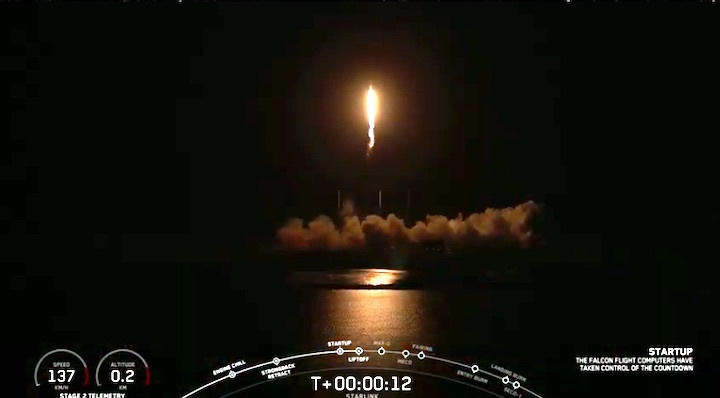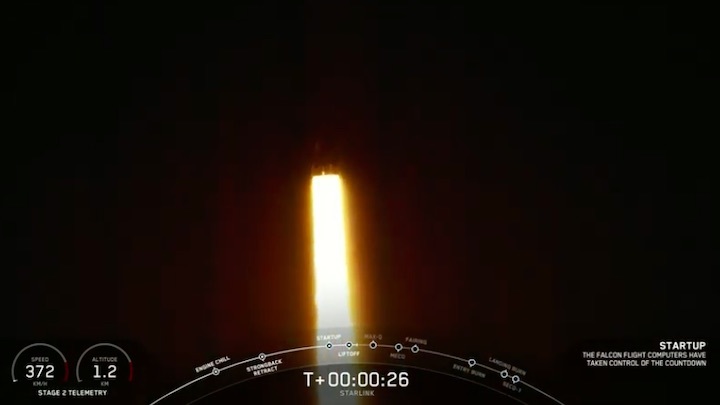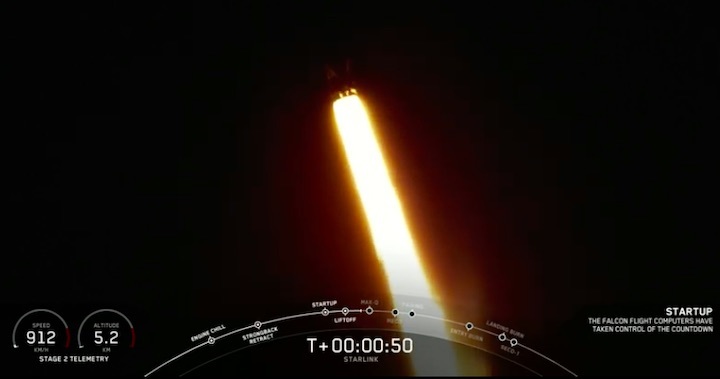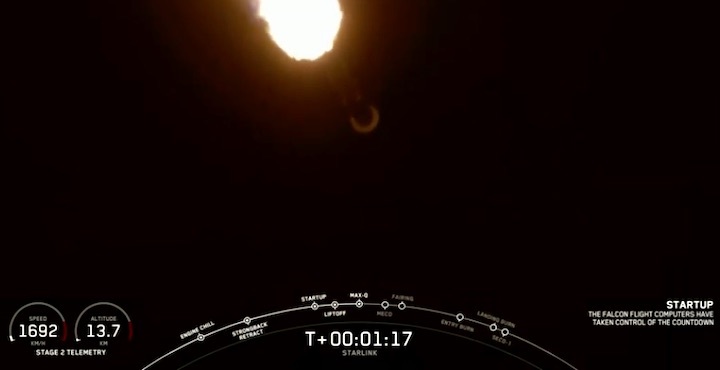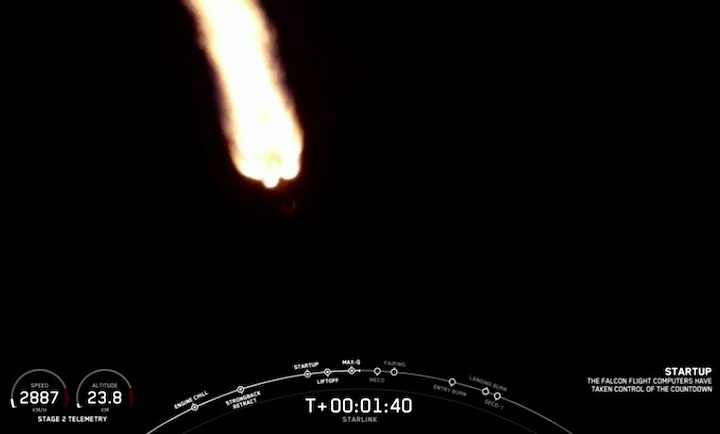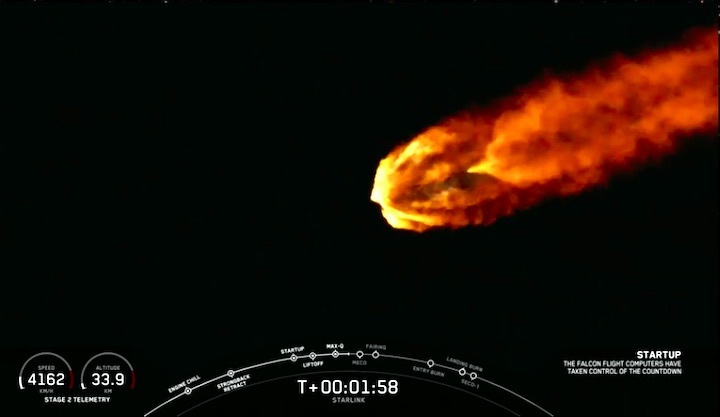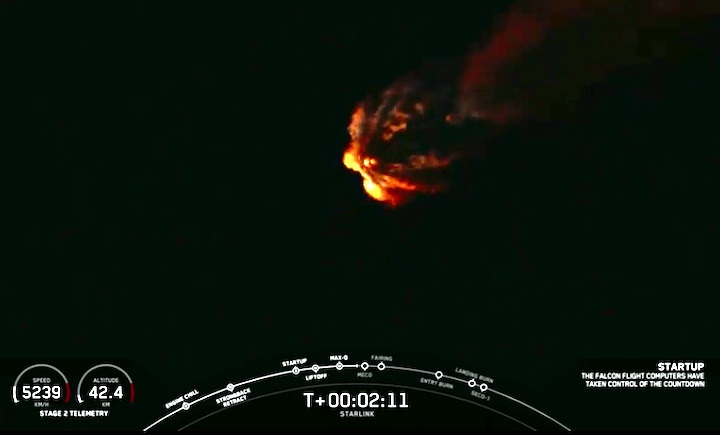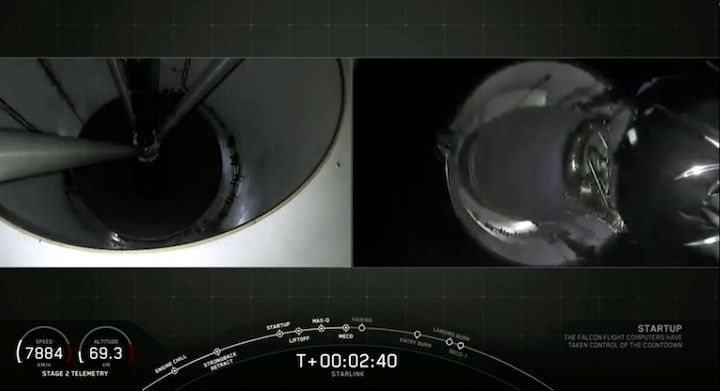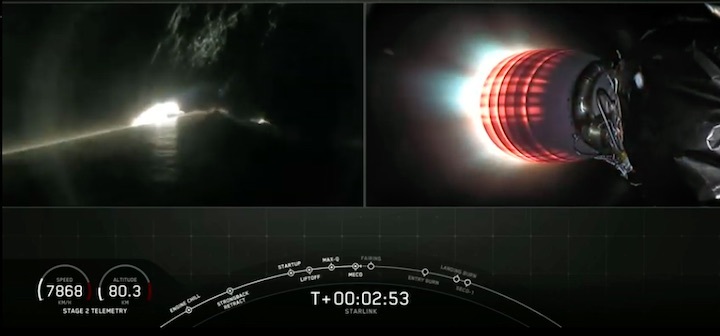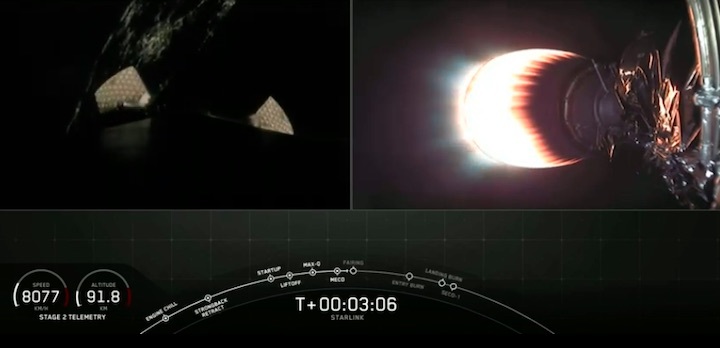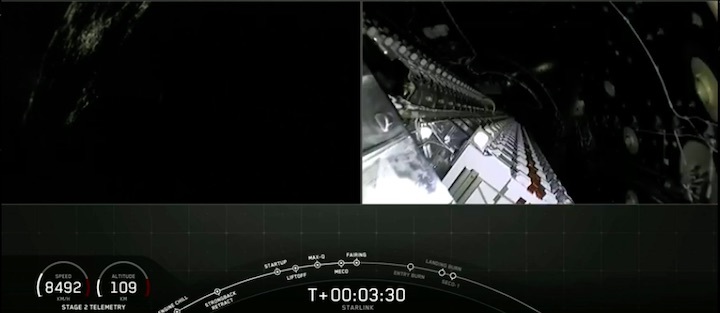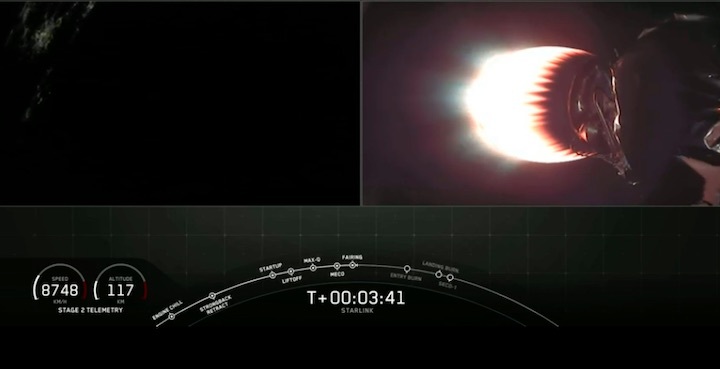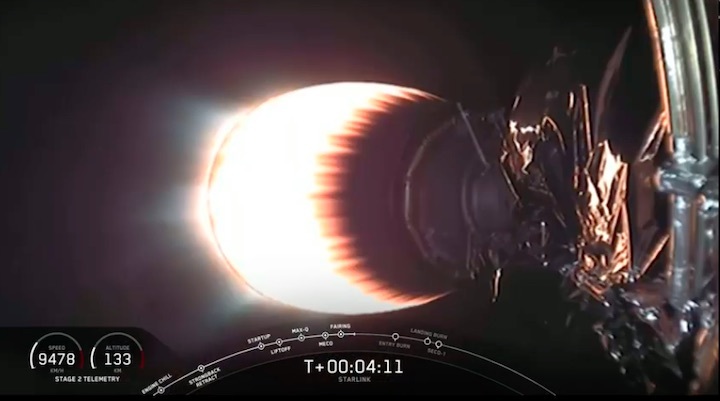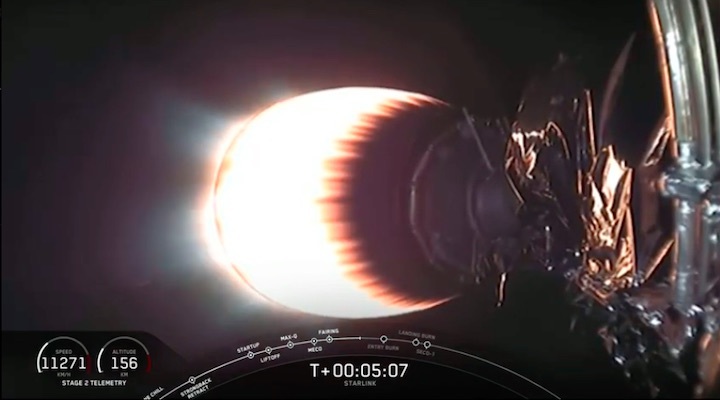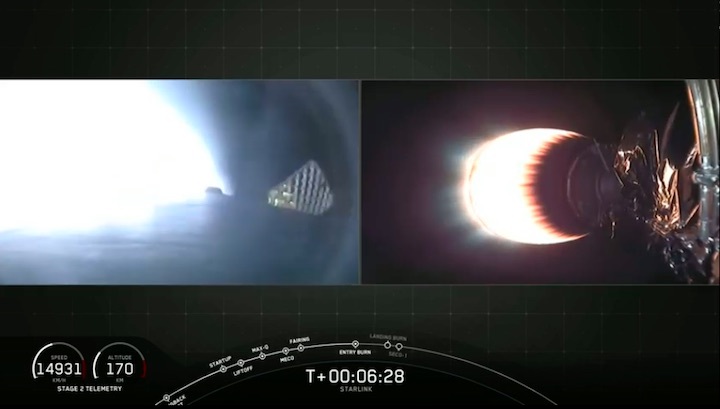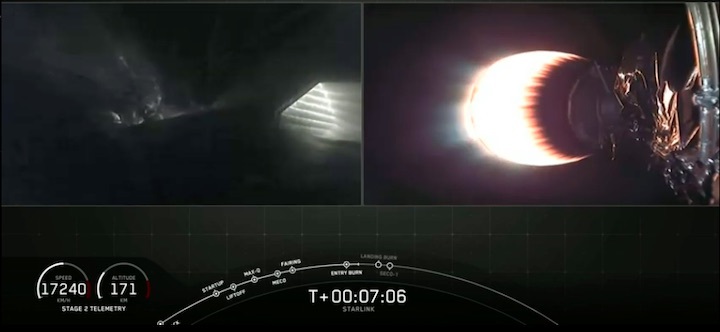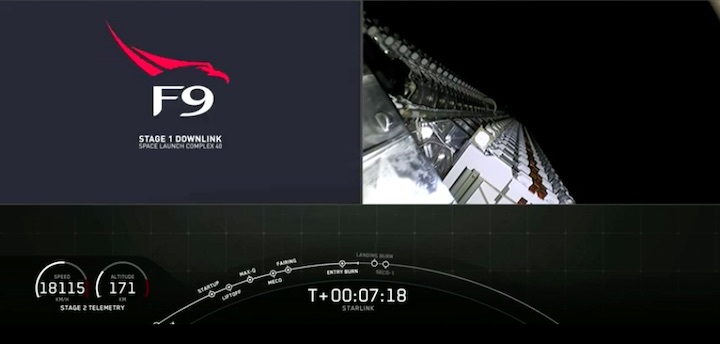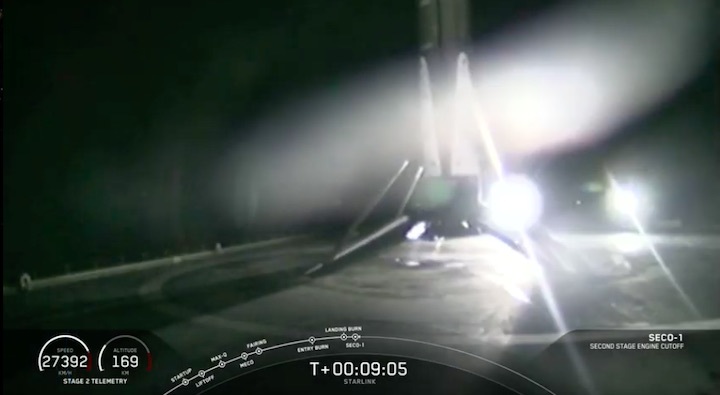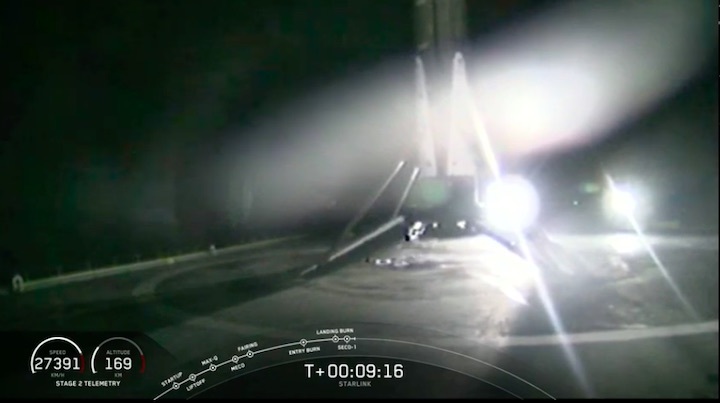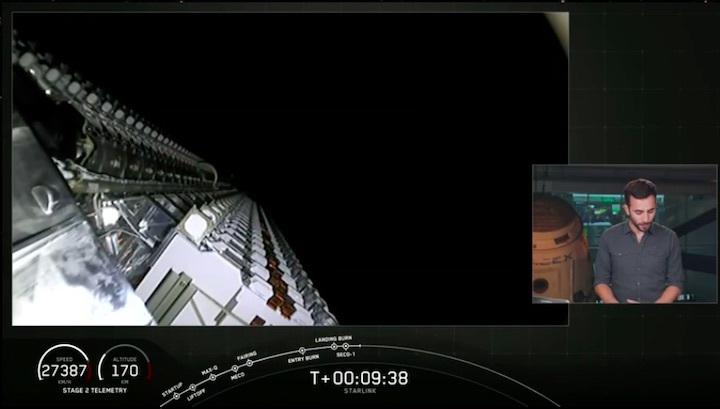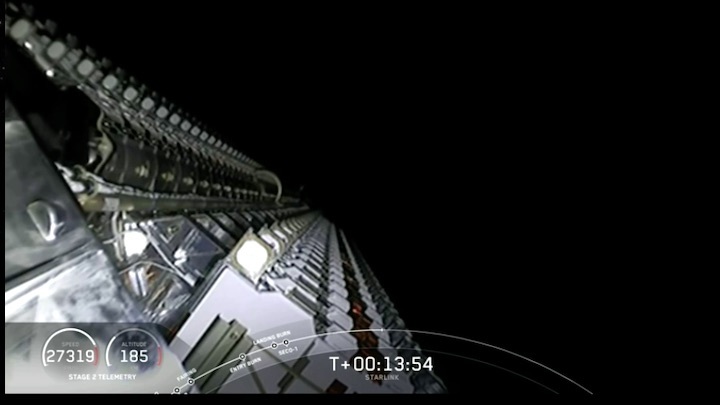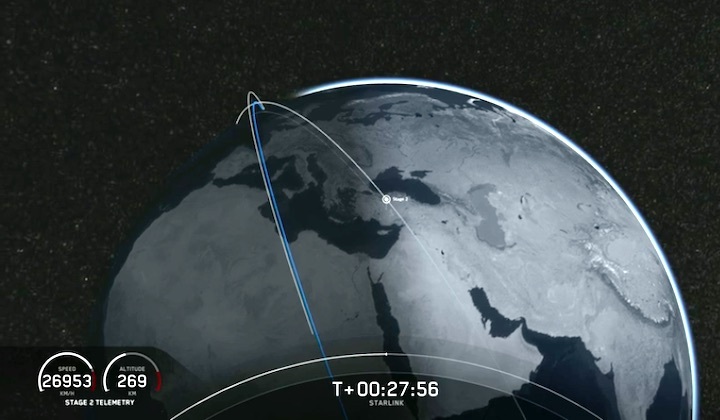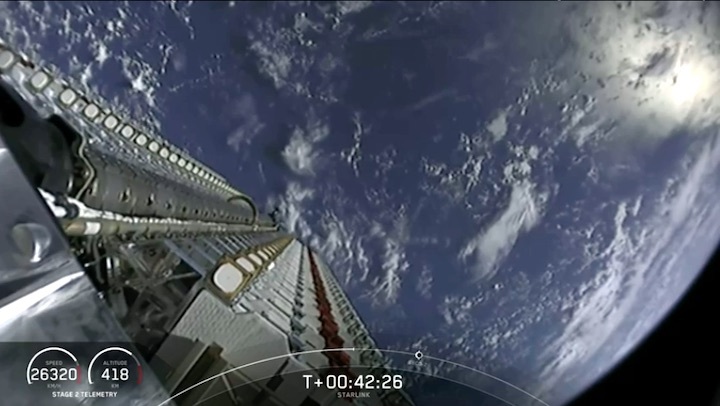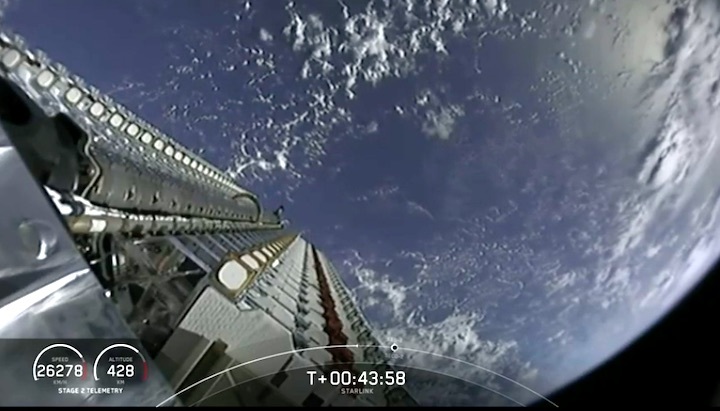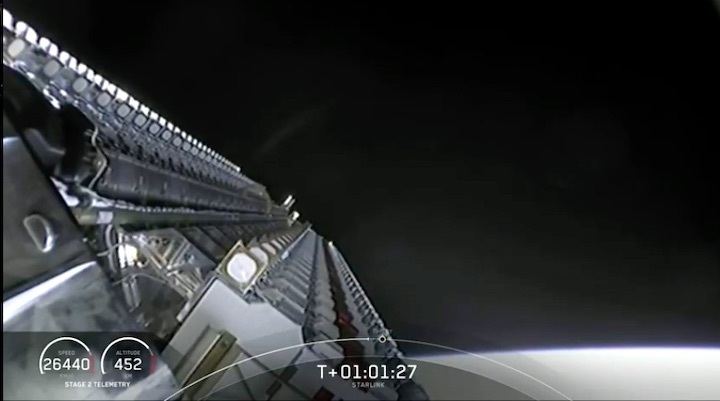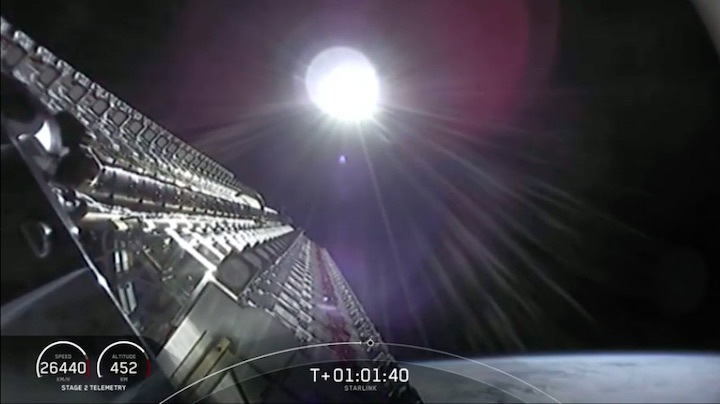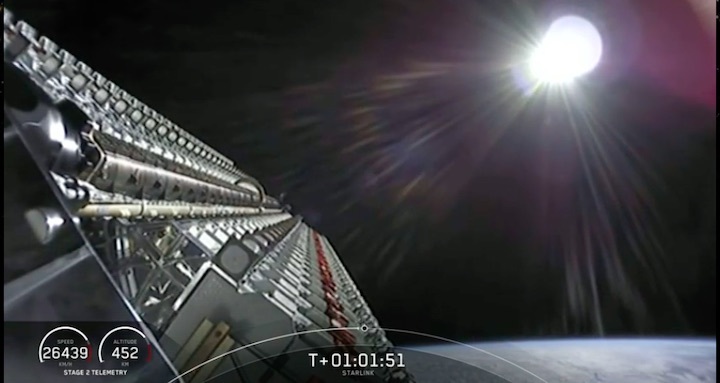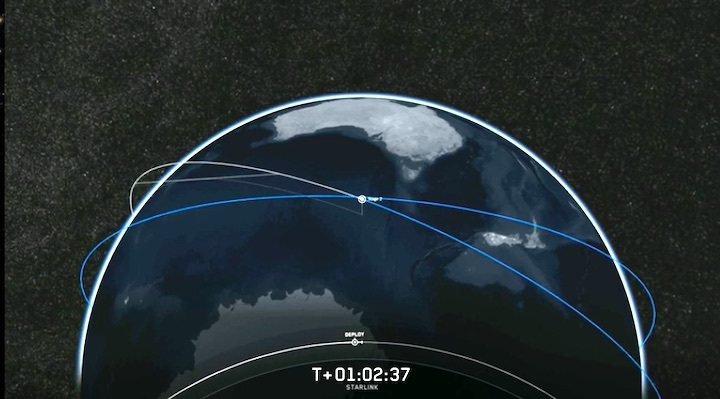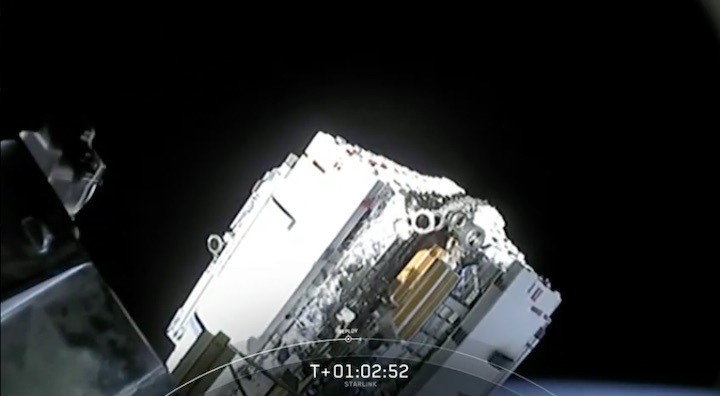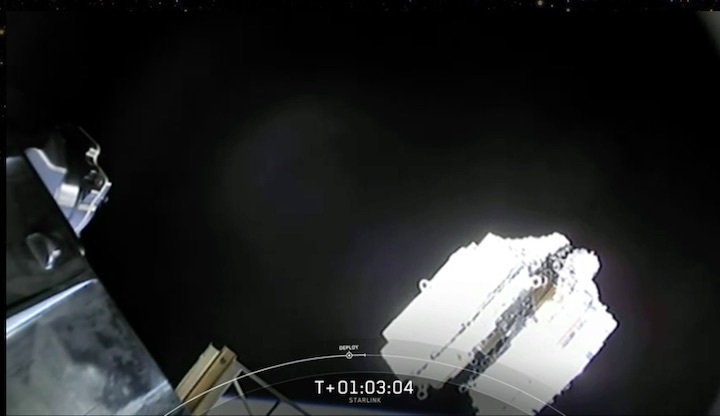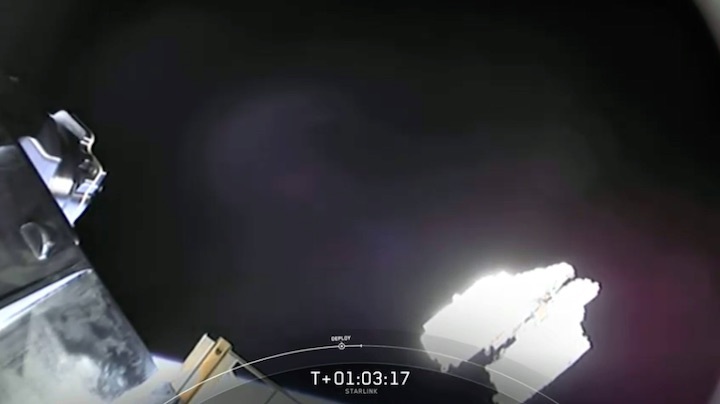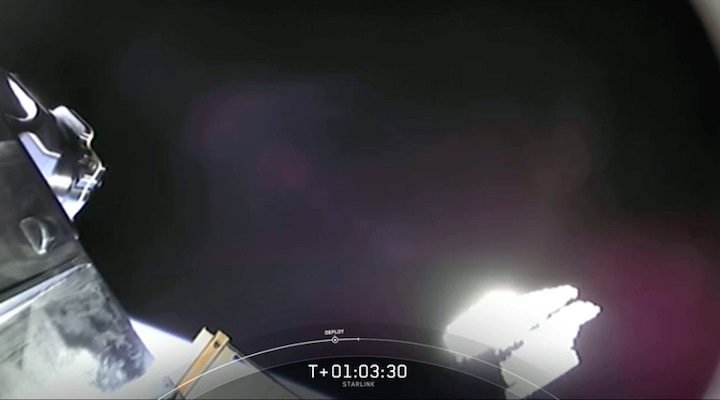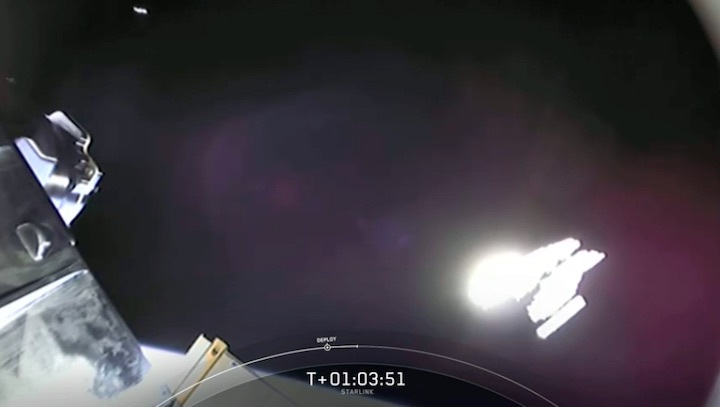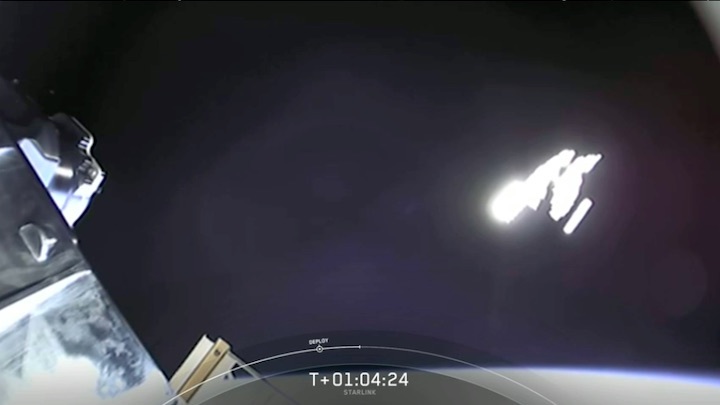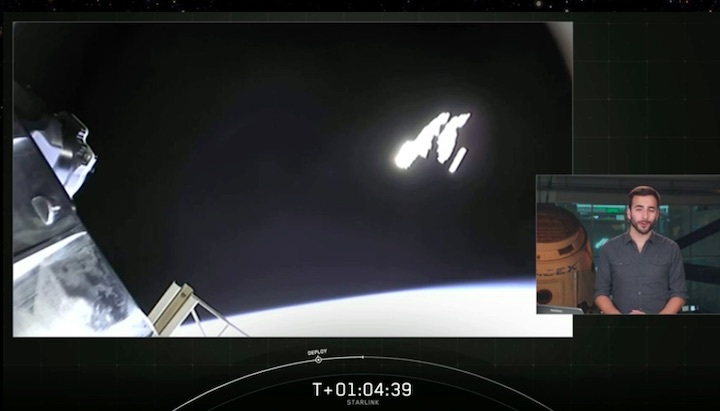13.05.2019
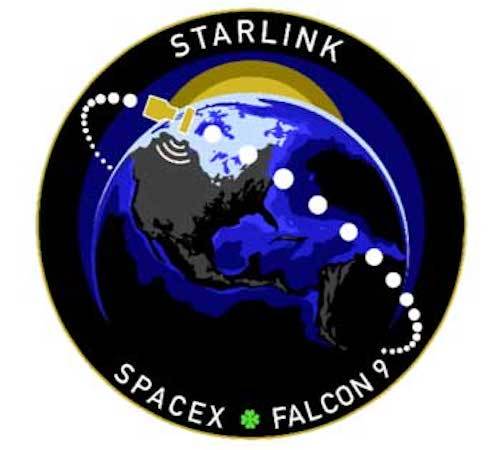
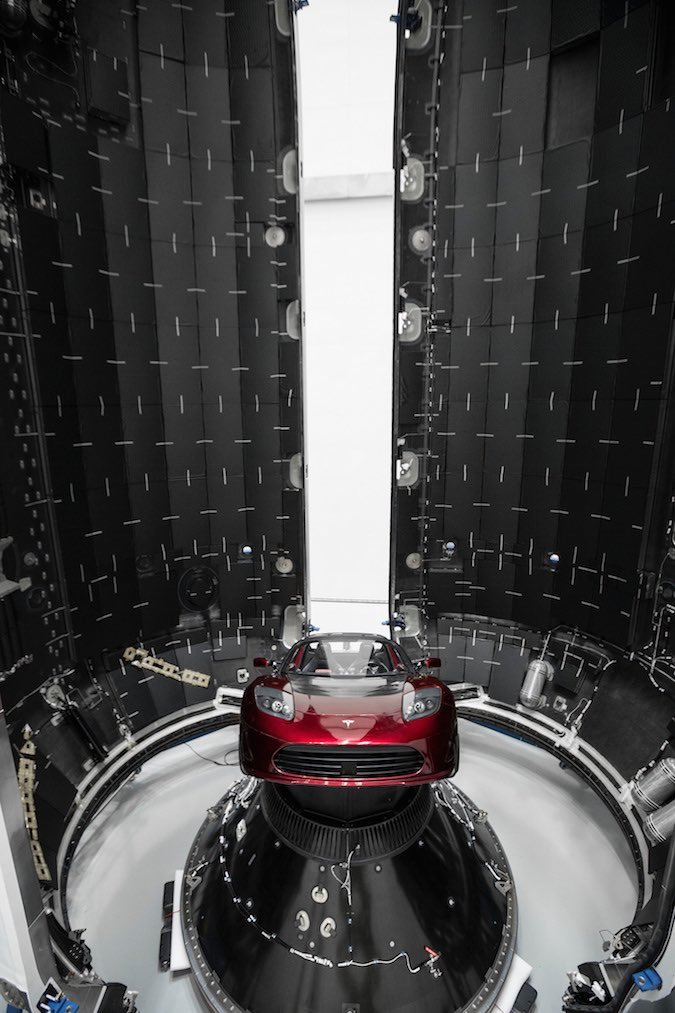
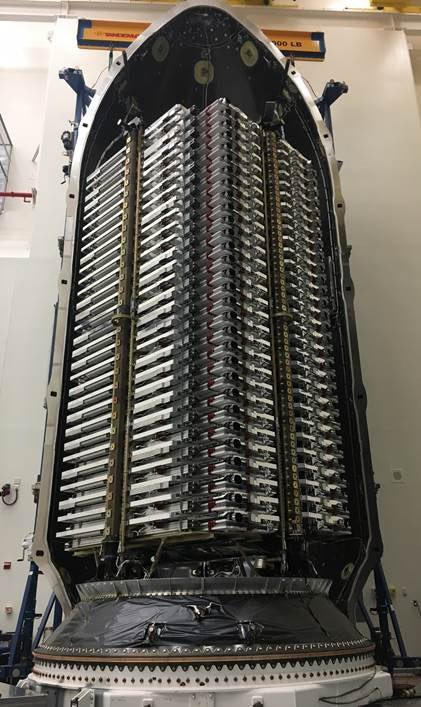
The weather forecast looks mostly favorable for the launch of a whopping 60 SpaceX communications satellites from Cape Canaveral Air Force Station on Wednesday, according to the Air Force.
Teams are expected to face 70% "go" conditions for the 10:30 p.m. Falcon 9 liftoff from Launch Complex 40. The possibility of clouds and showers were noted as the main concerns by the Air Force's Space Coast-based 45th Weather Squadron.
After liftoff, the rocket's first stage will target a landing on the Of Course I Still Love You drone ship stationed in the Atlantic Ocean.
Tightly packed into the rocket's school bus-sized fairing will be 60 Starlink satellites, which will help kick off the company's entrance into the telecommunications business. Eventually, SpaceX hopes to operate more than 11,000 satellites in low-Earth orbit to beam internet connectivity back down to the ground.
"First 60 SpaceX Starlink satellites loaded into Falcon fairing," CEO Elon Musk said via Twitter Saturday evening. "Tight fit."
If successful, not only will the Starlink constellation bypass complicated ground-based infrastructure and deliver internet to remote areas of the world, but it could become a cash cow that helps fund Musk's dream to colonize Mars, according to spaceflight experts. The company confirmed via federal documents that it would directly target private and business users alike.
This launch comes after a California mission last year boosted two prototype Starlink satellites to orbit, known as Microsat-2a and Microsat-2b. This first batch of 60 will also be used for testing, but will do more to pave the way for the constellation that the company hopes will be sufficiently deployed by 2024.
Quelle: Florida Today
+++
Update: 14.05.2019
.
Weather still fine for SpaceX Starlink mission from Cape Canaveral Air Force Station
Weather conditions have improved slightly for Wednesday's scheduled launch of SpaceX's Falcon 9 rocket from Cape Canaveral Air Force Station.
According to the Air Force's 45th Weather Squadron, conditions are now expected to be 80% "go" for the 10:30 p.m. liftoff from Launch Complex 40, with cumulus clouds being the primary concern. The launch window will remain open until midnight.
In the event of a delay or scrub, the next launch opportunity would be Thursday, with weather conditions remaining the same.
SpaceX is hoping to launch 60 of its Starlink communications satellites, bringing the aerospace company one step closer in providing global internet coverage from space.
Following last year's launch from California that saw two prototype Starlink satellites blast into orbit, the 60 satellites set to launch Wednesday will continue to be used for testing but will provide SpaceX with a better demonstration for how to deploy the objects, according to a report in Space News.
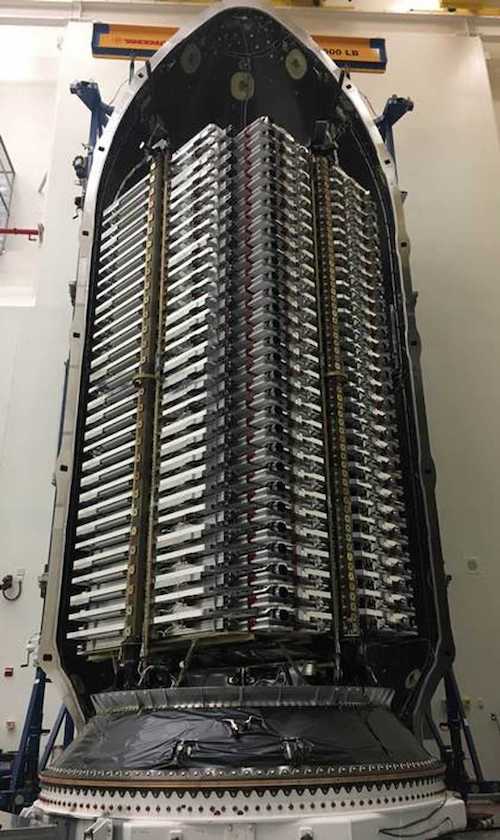
CEO Elon Musk noted on Twitter that "much will likely go wrong" for this first mission and six more launches, with 60 satellites each, are still needed for minor coverage, and 12 launches for moderate coverage.
More details should be released on Wednesday, he said.
SpaceX president and chief operating officer Gwynne Shotwell said SpaceX plans on having two to six more launches for its Starlink broadband constellation, according to the report in Space News. As to how many of those launches will occur this year, that all depends on how the first batch launching May 15 goes, she said.
The ultimate goal is to have almost 12,000 satellites operating in low-Earth orbit by 2024. Aside from providing internet coverage to billions of people on Earth, Musk hopes the Starlink Constellation will also help fund his dream of colonizing Mars.
Launch Wednesday
- Rocket: SpaceX Falcon 9
- Mission: SpaceX Starlink-1
- Launch Time: 10:30 p.m. ET
- Launch Window: To midnight
- Launch Complex: 40 at Cape Canaveral Air Force Station
- Landing: Yes, Of Course I Still Love You drone ship
- Weather: 80% "go"
Join floridatoday.com/space for countdown updates and chat starting at 9:30 p.m. Wednesday, including streaming of SpaceX's launch webcast.
Quelle: Florida Today
+++
Falcon 9 rocket rolled out for first dedicated Starlink launch
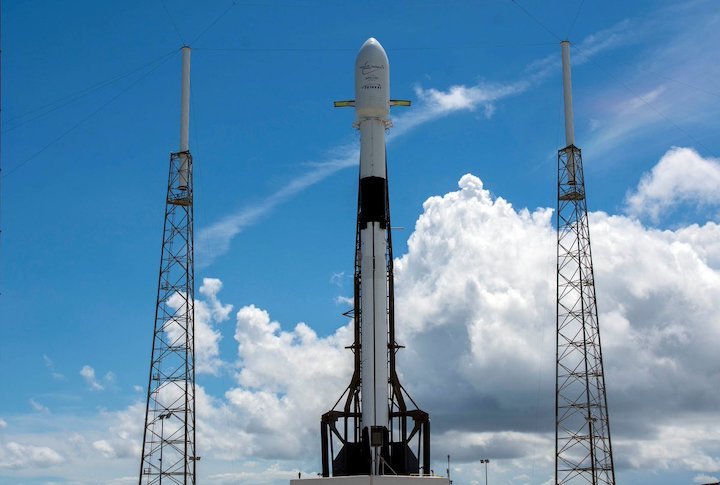
SpaceX ground teams at Cape Canaveral transferred a Falcon 9 rocket to launch pad 40 and rotated the booster vertical Monday for a preflight hold-down firing, ahead of a liftoff scheduled for Wednesday night carrying 60 satellites into orbit for the company’s planned Starlink broadband constellation.
SpaceX confirmed the completion of the static fire test Monday night, setting the stage for liftoff of the Falcon 9 rocket during a 90-minute window opening at 10:30 p.m. EDT Wednesday (0230 GMT Thursday) from Cape Canaveral’s Complex 40 launch pad.
The launch will be the first mission dedicated to SpaceX’s multibillion-dollar Starlink project, which aims to eventually provide Internet connectivity worldwide with a constellation that could eventually number nearly 12,000 satellites.
The hotfire test Monday was a customary milestone in SpaceX’s launch campaigns. The hold-down firing doubled as a checkout of the Falcon 9 rocket and its launch pad, and a countdown rehearsal for SpaceX’s launch team at Cape Canaveral.
The Falcon 9 was filled with super-chilled, densified kerosene and liquid oxygen propellants during a mock countdown, culminating in ignition of the first stage’s nine Merlin 1D main engines for several seconds. Hold-down restraints will keep the Falcon 9 firmly grounded during the engine firing.
The 60 Starlink satellites were already installed on top of the Falcon 9 launcher ahead of the hotfire test, encapsulated inside the rocket’s aerodynamic nose shroud for Wednesday night’s liftoff. Since a Falcon 9 rocket exploded during preparations for a similar hotfire test in September 2016 — an accident that destroyed the launch vehicle and an Israeli-owned commercial communications satellite — SpaceX has conducted the static fire tests without payloads on-board the rocket.
But SpaceX is the launch provider and the customer for Wednesday’s mission.
Elon Musk, SpaceX’s founder and chief executive, revealed the number of satellites scheduled for the first dedicated Starlink launch in a tweet Saturday night. He also tweeted a picture of the 60 spacecraft stacked inside the Falcon 9’s payload fairing.
Musk tweeted that the 60 satellites, which are flat-packed atop the rocket, are a “tight fit” inside the Falcon 9’s 17.1-foot-wide (5.2-meter) payload fairing.
He added that the satellites are based on the “production design” SpaceX intends to use for future Starlink spacecraft. SpaceX launched two Starlink demonstration satellites as piggyback payloads on a Falcon 9 launch with a Spanish radar observation satellite in February 2018, but the spacecraft shown stacked in the Falcon 9 fairing for launch this week have a different appearance.
Gwynne Shotwell, SpaceX’s president and chief operating officer, discussed the objectives of the first dedicated Starlink satellite launch at an industry conference last week.
“This next batch of satellites will really be a demonstration set for us to see the deployment scheme and start pulling our network together,” Shotwell said May 7 at the Satellite 2019 conference in Washington. “We start launching satellites for actual services later this year. I wouldn’t be surprised if we had two-to-six (additional) launches at the end of the year (for Starlink.) It largely depends on how we do on this first batch.”
“Much will likely go wrong on (the) first mission,” Musk tweeted. He added that six more launches of 60 satellites are needed for “minor coverage,” and 12 more launches would provide “moderate coverage.”
Musk said more details on the Starlink satellites would be released on the day of the launch.
The Starlink satellites are built and manufactured at a SpaceX facility in Redmond, Washington. SpaceX eventually plans to launch and operate up to 4,400 Ku-band and Ka-band satellites, and a follow-on network of 7,518 additional Starlink satellites transmitting in V-band frequencies.
SpaceX continues raising funding for network, which company officials have previously said could cost $10 billion to develop and deploy. The Starlink satellites are designed to beam broadband signals around the world from orbits hundreds of miles above Earth, creating a global umbrella of high-speed Internet connectivity.
The first group of up to 1,584 Starlink satellites will operate in orbits 341 miles (550 kilometers) above Earth, at an inclination of 53 degrees to the equator.
SpaceX plans to initially deploy roughly 4,400 Starlink satellites broadcasting signals in Ku-band and Ka-band. A follow-on network of 7,518 additional Starlink satellites would transmit in V-band frequencies, according to regulatory filings with the Federal Communications Commission.
While Musk said the 60 Starlink payloads launching this week are production models, unlike the demonstration satellites launched last year, Shotwell said last week that the spacecraft aboard the next Falcon 9 flight lack at least one key system required to make the network function as designed.
“They’re capable, but there are no inter-satellite links on it,” Shotwell said. “I’ll call them test-class satellites, but the antennas are pretty hot on these things. They’re a very capable system.”
The operational Starlink fleet will use laser inter-satellite links to hand off Internet connections around the world without routing the signals through a ground station. The satellites also use electric propulsion for in-orbit maneuvers.
Quelle: SN
----
Update: 16.05.2019
.
STARLINK MISSION
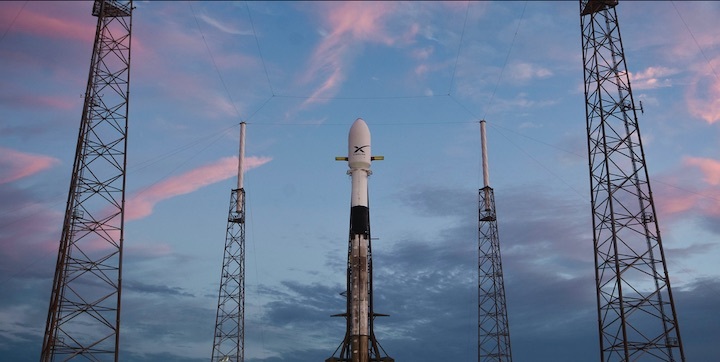
SpaceX is targeting Thursday, May 16 for the launch of 60 Starlink satellites from Space Launch Complex 40 (SLC-40) at Cape Canaveral Air Force Station, Florida. SpaceX’s Starlink is a next-generation satellite network capable of connecting the globe, especially reaching those who are not yet connected, with reliable and affordable broadband internet services.
The launch window opens at 10:30 p.m. EDT, or 2:30 UTC on May 17, and closes at 12:00 a.m. on May 17, or 4:00 UTC. Falcon 9’s first stage for this mission previously supported the Telstar 18 VANTAGE mission in September 2018 and the Iridium-8 mission in January 2019. Following stage separation, SpaceX will attempt to land Falcon 9’s first stage on the “Of Course I Still Love You” droneship, which will be stationed in the Atlantic Ocean. Approximately one hour and two minutes after liftoff, the Starlink satellites will begin deployment at an altitude of 440km. They will then use onboard propulsion to reach an operational altitude of 550km.
Quelle: SpaceX
----
Update: 21.05.2019
.
SpaceX to Launch 60 'Starlink' Internet Satellites Thursday

